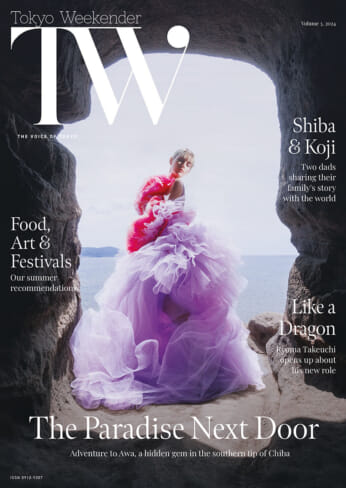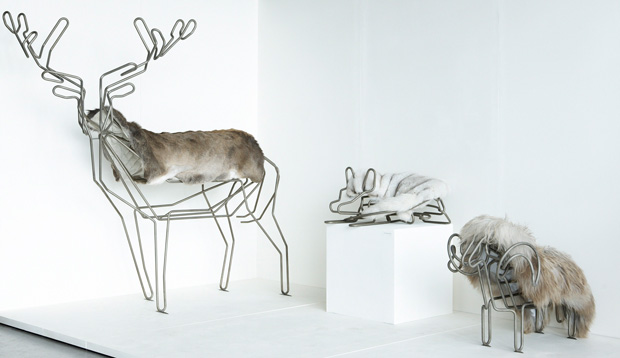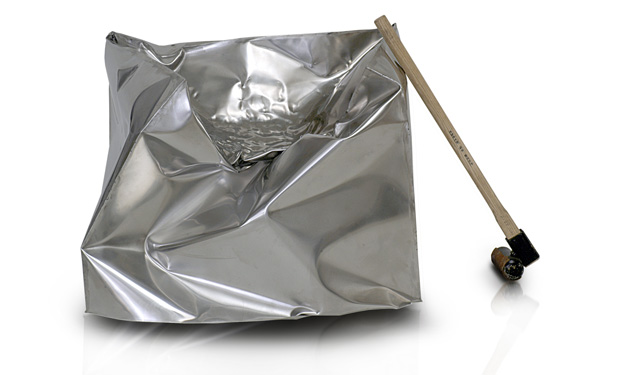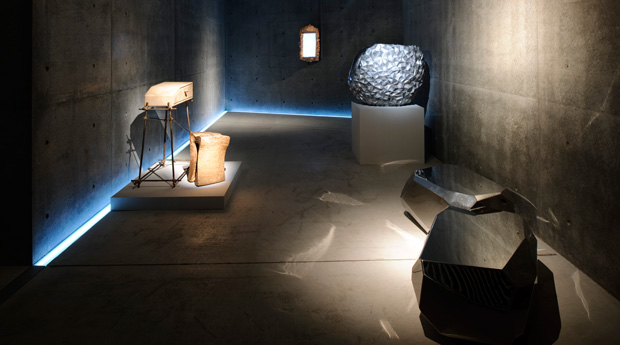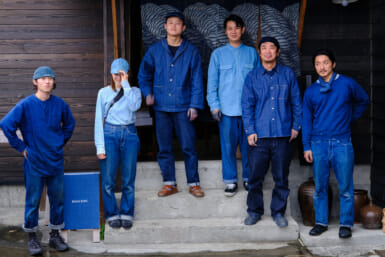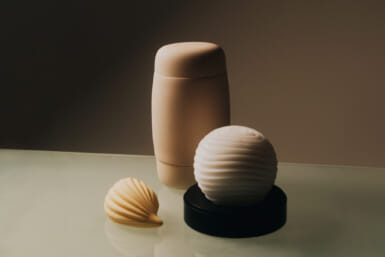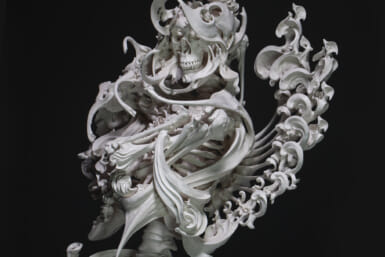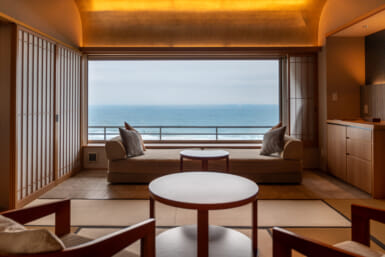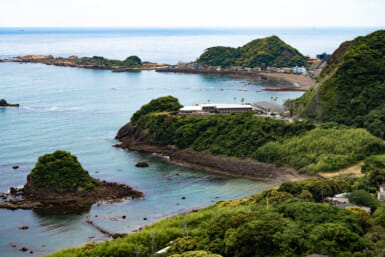by Owen Schaefer
The first thing you encounter on entering the Post Fossil exhibition at 21_21 Design Sight is a large sheet-metal cube that had been beaten with a sledgehammer into the rough shape of a chair. It’s a powerful image. While it would be uncomfortable—or impossible—to use, it is still clearly a chair, and it has been constructed through a combination of raw modern materials and prehistoric methods…had our prehistoric ancestors ever been inclined to make an armchair. As for design, well, it goes back to basics. It is design on the fly, the method and material choosing the form.
Guest-directed by Dutch trend forecaster Li Edelkoort, Post Fossil, while riffing on the idea of bones and fossils within design and of design, also refers to a future post-fossil-fuel age. Edelkoort’s near-utopian vision of this future seeks to convince audiences of a movement toward the hand-made, the un-manufactured, and toward rough, easily understood materials. There are some challenging and interesting ideas here (with just a touch of silliness), and the show’s real success is in driving the viewer to consider the production of the objects we surround ourselves with, their impact, and to a certain extent, their necessity.
The show is a big one, involving some 71 artists and designers, and the works included swing between those that serve as reminders of the origins of material, such as Julia Lohmann’s realistically cow-shaped leather sofas; works that mimic prehistoric production methods using ancient or modern materials, such as Nacho Carbonell’s recycled junk-mail benches; and works that simply have a kind of prehistoric aesthetic—Atelier Van Lieshout’s enormous sculptural lamp seems a fitting example.
Post Fossil steers safely clear of tenuous-looking product placements that have cluttered past shows, and the entire exhibition benefits from it. The various rooms are divided into loose thematic sections which allow for genuinely refreshing transitions between objects that span the spectrum of art object to product.
As a result, there is little differentiation between what is simply quaint in its prehistoric chic, and more conceptual works. There are any number of stylish furniture pieces involving fur, leather and wood that seem to risk fueling a consumer desire for products that simply aren’t environmentally viable. But Karin Frankenstein’s chair made partially of cow dung stands as a (possibly unwitting) counter-argument—the material used smells more or less as one would expect, albeit faintly, and it isn’t likely to turn up at Ikea any time soon despite how easily obtainable it is. Within the context of Post Fossil there are enough critical works mixed with the stylistic ones that these kinds of dialogues occur almost naturally.
One item that sold the show for me was a hideous yellow toaster that looked like it had been through a fire. Thomas Thwaites’s personal project was to build a toaster by hand—from the ground up. He took copper ore, iron ore and other metals from mines and hillsides and learned how to extract them using a microwave unit. He’d even hoped to make his own plastic but was advised against it for the sake of safety, and recycled instead. The result is a twisted parody of a toaster, accompanied by a documentary video showing some of the work that Thwaite had to go through just to create something as simple (and as single-purposed) as a toaster. The work speaks on any number of levels about our disconnectedness from the things around us, and the folly of self-sufficiency. And above all, it is a serious lesson in connecting the objects we purchase with their origins.
Show: Post Fossil: Excavating 21st Century Creation (to June 27)
Gallery: 21_21 Design Sight (Roppongi station)
Hours: 11am–8pm (closed Tue)
Admission: ¥1,000
Tel: 03-3475-2121
www.2121designsight.jp
